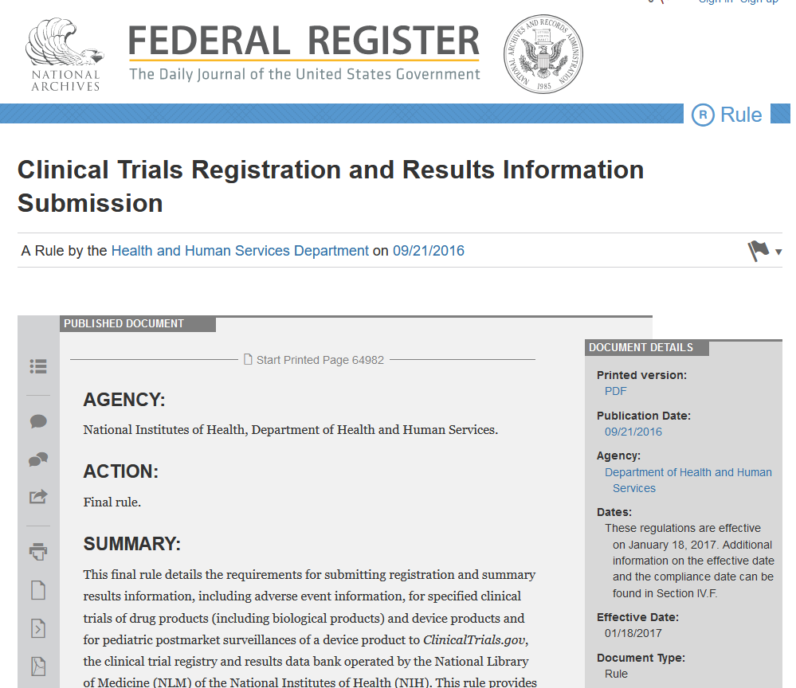
New US clinical trial information reporting rule starts January 2017
The final rule for clinical trial information reporting was published by the United States National Institutes of Health, Department of Health and Human Services in September 2016 and now includes medical devices. It is intended to boost accessibility of clinical trial information to the public.
The new requirements for clinical trial information reporting will come into effect on January 18th, 2017. Responsible parties will have 90 calendar days after the effective date to comply with the requirements of this rule. The big change is similar to one in pharmaceuticals; the requirement for reporting clinical trial information is now expanded to medical devices.
What is required of medical device manufacturers to comply with the new rule?
Some of the major provisions include:
- Determine the need to submit clinical trial information. Information must be submitted to https://clinicaltrials.gov/ for all controlled clinical trials. These are interventional clinical trials with one or more arms and with one or more pre-specified outcome measures. Checklists determining which types of clinical trials fall under the final rule are provided in Section IV.A.5 and Section IV.B.2.
- If eligible, register the clinical trial at ClinicalTrial.gov no later than 21 calendar days after enrolling the first human subject and determine the information needed to be submitted for registration.
- Once the trial is complete, submit the data in a tabular format summarizing participant flow; demographic and baseline characteristics; primary and secondary outcomes, as well as results of any scientifically appropriate statistical tests; and adverse event information. In general sponsors of clinical trials are required to submit information no later than 1 year after the trial completion date.
Results Information Submission:
- Collect and submit Adverse Events Information-submit information summarizing the number and frequency of adverse events experienced by participants enrolled in a clinical trial, by arm or comparison group, as well as a brief description of each arm or group as a component of clinical trial results information.
- Submission of three tables of adverse event information: one summarizing all serious adverse events; one summarizing other adverse events that occurred with a frequency of 5 percent or more in any arm of the clinical trial; and finally, one summarizing all-cause mortality data by arm or group. Adverse event tables must include information about events that occurred, regardless of whether or not they were anticipated or unanticipated.
- Submit updates of the required information at least annually if there are changes to report.
Legal consequences of non-compliance:
- This final rule outlines the potential civil or criminal actions, civil monetary penalty actions, and grant funding actions that may be taken
The above information will be collected to provide for an expanded registry and results data bank to help patients find trials for which they might be eligible, enhance the design of clinical trials and prevent duplication of unsuccessful or unsafe trials, improve the evidence base that informs clinical care, increase the efficiency of drug and device development processes, improve clinical research practice, and build public trust in clinical research.
Virginia Anastassova, RAC, is the Regulatory Affairs Manager/ Senior QA Specialist at StarFish Medical. She brings extensive experience in quality management and regulatory affairs to our clients.
Images: StarFish Medical
